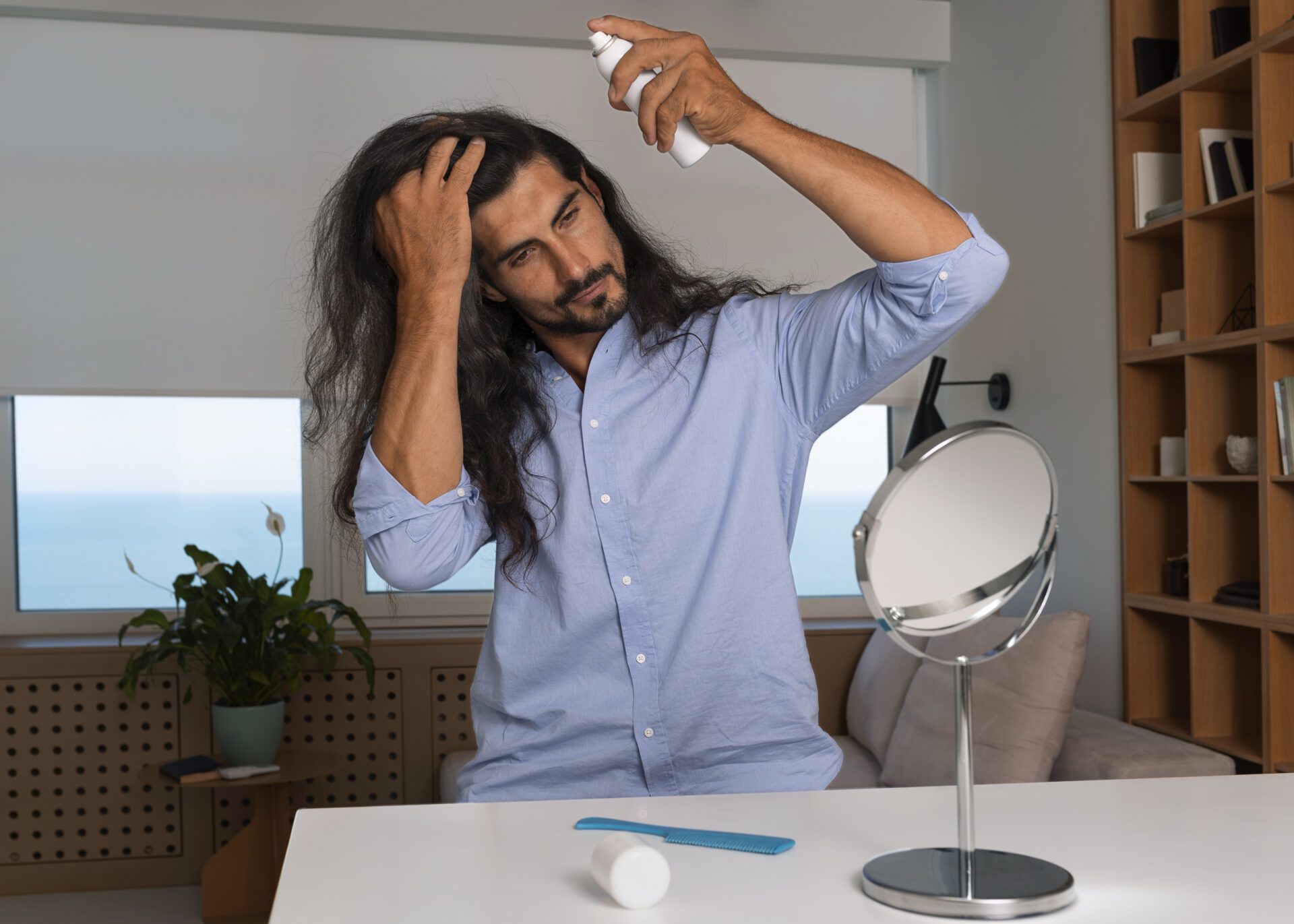
In recent years, a growing number of individuals experiencing hair loss have begun questioning the long-standing use of medications like finasteride and minoxidil. Both remain clinically effective for many, yet they also carry limitations that drive people to seek alternative solutions. Understanding when these treatments are beneficial is crucial for professionals working with clients or patients experiencing hair loss.
Finasteride, a 5-alpha reductase inhibitor, reduces the conversion of testosterone to dihydrotestosterone (DHT), a key driver of androgenetic alopecia. Numerous studies have confirmed that finasteride can slow hair loss and even promote regrowth, particularly in men (Kaufman et al. 1998). However, concerns have emerged about potential side effects, including sexual dysfunction, mood changes, and what some describe as post-finasteride syndrome (Irwig 2012). While the true incidence and mechanisms of these side effects remain under investigation, they have prompted caution and hesitation among both patients and clinicians.
Minoxidil, initially developed as an antihypertensive medication, remains a first-line topical treatment for hair loss due to its vasodilatory effects and ability to prolong the anagen (growth) phase of hair follicles (Suchonwanit, Thammarucha, and Leerunyakul 2019). It is widely regarded as safe for many individuals. Yet it is not without drawbacks; some users experience scalp irritation, increased shedding during early use, or find that results plateau after an initial period of success. Furthermore, adherence can be low, as minoxidil requires lifelong, twice-daily application to maintain results (Olsen et al. 2002).
Despite the effectiveness of these medications for many, not every case of hair loss responds well to them, nor do they address the complex underlying reasons why hair loss happens in the first place. This is where professionals with a deeper understanding of both medical and systemic health factors can make a difference, helping clients look beyond symptom management to long-term solutions. My professional journey has grown out of precisely these complexities.
Throughout my career, I have worked alongside outstanding hair transplant surgeons in Dubai and California, brilliant professionals who are truly among the best in the field. That experience allowed me to learn the medical and surgical aspects of hair restoration in depth, and I hold immense respect for these medical interventions, which can transform lives for the right candidates. However, I also witnessed many patients struggling with hair loss who were either not ideal surgical candidates or who continued to experience underlying health issues despite surgical or pharmacological treatments. This reinforced my belief that sustainable hair restoration often requires addressing the root causes driving hair loss from within.
These limitations are leading many individuals to explore alternative paths, particularly those who wish to address the root causes of hair loss rather than simply manage symptoms. As a trichologist trained at the Italian Academy of Hair Microscopy and a Functional Medicine Health Coach through the Health Coaching Academy, I have witnessed firsthand how hair loss is often a signal of deeper systemic dysfunction. Nutrient deficiencies, chronic inflammation, hormonal imbalances, oxidative stress, and disruptions in the gut microbiome all play significant roles in many cases of hair thinning or shedding (Trueb 2003; Almohanna, Ahmed, and Tosti 2019).
In my practice, I integrate functional medicine with trichology to investigate and correct these internal imbalances. For some individuals, this approach can stabilize or even reverse hair loss, eliminating the need for lifelong medication reliance. When necessary, I also incorporate external protocols, such as pH-balancing scalp treatments, essential oil blends with proven antimicrobial and anti-inflammatory properties, or low-level laser therapy, to create a personalized treatment plan tailored to each individual’s unique physiology and diagnosis.
It’s important to clarify that finasteride and minoxidil are not inherently “bad” treatments. They remain valuable tools for many clients, especially in androgenetic alopecia. Yet they are not universal solutions, and they do not address underlying causes when hair loss stems from systemic issues.
As professionals, we have a responsibility to educate clients about all available options, pharmaceutical, nutritional, and holistic, and to support them in choosing safe, evidence-based interventions that align with their individual goals and health profiles.
Hair is not simply an aesthetic feature. It is a barometer of internal health. As our understanding of trichology and integrative medicine deepens, we gain more tools to help individuals not only retain hair but also improve their overall well-being.
References
Almohanna, Hind M., Ahmed A. Ahmed, and Antonella Tosti. 2019. “Nutritional Factors and Hair Loss in Women.” Dermatology and Therapy 9 (1): 51–70. https://doi.org/10.1007/s13555-018-0278-4.
Irwig, Michael S. 2012. “Persistent Sexual Side Effects of Finasteride: Could They Be Permanent?” Journal of Sexual Medicine 9 (11): 2927–2932. https://doi.org/10.1111/j.1743-6109.2012.02896.x.
Kaufman, Keith D., et al. 1998. “Finasteride in the Treatment of Men with Androgenetic Alopecia.” Journal of the American Academy of Dermatology 39 (4 Pt 1): 578–589. https://doi.org/10.1016/S0190-9622(98)70193-2.
Olsen, Elise A., et al. 2002. “A Randomized Clinical Trial of 5% Topical Minoxidil Versus 2% Topical Minoxidil and Placebo in the Treatment of Female Pattern Hair Loss.” Journal of the American Academy of Dermatology 47 (3): 377–385. https://doi.org/10.1067/mjd.2002.124088.
Suchonwanit, Poonkiat, Chayada Thammarucha, and Kanchana Leerunyakul. 2019. “Minoxidil and Its Use in Hair Disorders: A Review.” Drug Design, Development and Therapy 13: 2777–2786. https://doi.org/10.2147/DDDT.S214005.
Trueb, Ralph M. 2003. “Association Between Smoking and Hair Loss: Another Opportunity for Health Education Against Smoking?” Dermatology 206 (3): 189–191. https://doi.org/10.1159/000069962.

